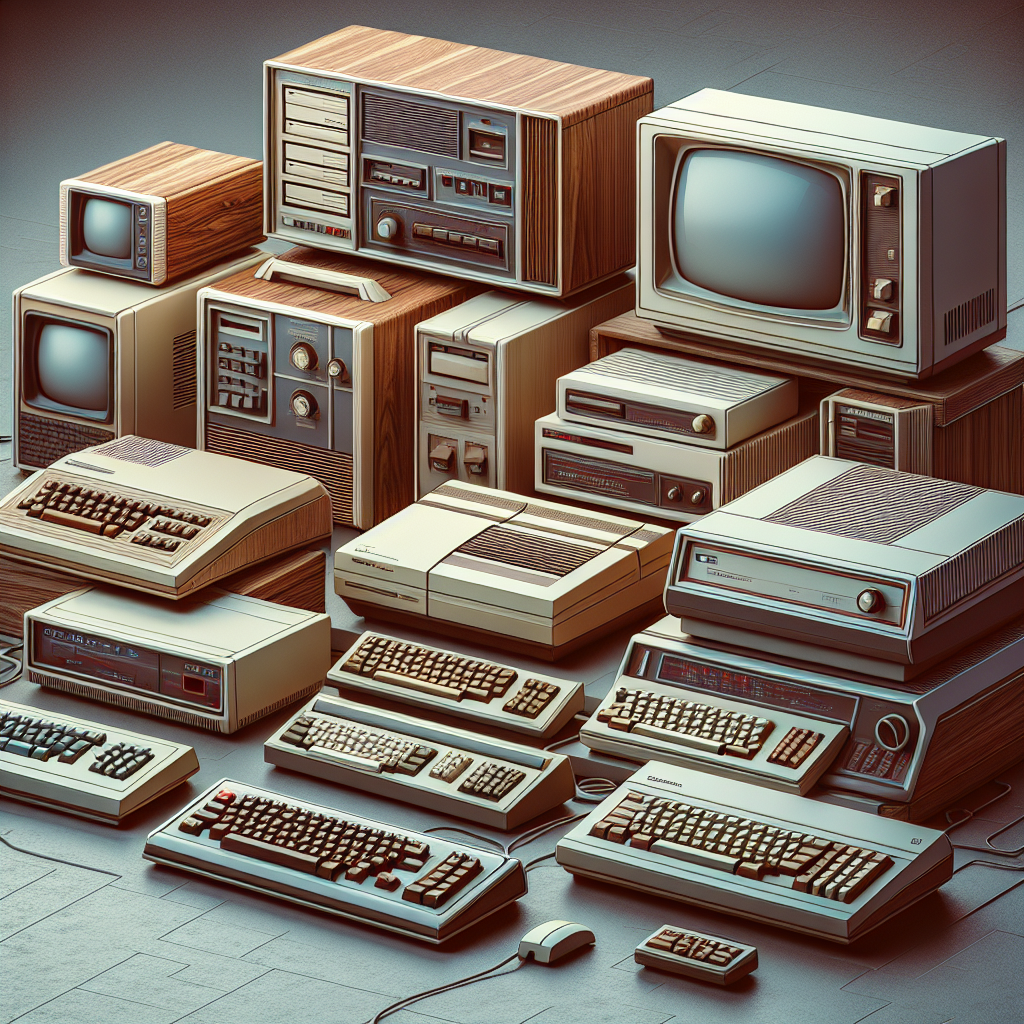Exploring Early Home Computer Models: A Guide for Tech Enthusiasts
As you embark on a nostalgic journey through the annals of technology, “Exploring Early Home Computer Models: A Guide for Tech Enthusiasts” offers a comprehensive roadmap. This guide serves to not only enlighten you about the fascinating evolution of home computers since the epoch-making 80’s era, but also assists in identifying the best, expensive and practical computer models to acquire as gifts during holiday seasons like Christmas. You’ll trace the evolution of technology, critique its progression, and appreciate the robust developments witnessed in the industry. This intriguing odyssey promises to rejuvenate your appreciation for contemporary technology, highlighting how far we’ve come and sparking curiosity about the astounding advancements that lie in wait.
Understanding the Significance of Early Home Computers
As you delve into the history of technology, it is crucial to grasp the significance of early home computers due to their essential role in shaping our current digital era. These machines were stepping stones leading us into the present day.
Role in shaping current technology
Early home computers contributed significantly to current technology. In essence, they defined the architecture and user-interface paradigms on which the modern computing world is founded. They introduced technology such as removable storage, color graphics, and networking capabilities, which are integral parts of today’s computers systems.
Impact on Society and Culture
The influence of early home computers extended well beyond the realms of technology. Schools, businesses, and households were fundamentally reshaped by their adoption. They transformed information access and communication, paving the way for the digital age and creating a culture in which technology drives progress.
Pioneers of Home Computers
A few visionary corporations charted the course for home computing’s colossal journey. Their innovation and risk-taking pioneered the trail for the computer revolution.
Apple Inc.
Led by visionaries Steve Jobs and Steve Wozniak, Apple Inc. was a significant player in the early home computer era. Their computers, renowned for their unique designs and robust user interfaces, brought computing to the masses.
IBM
IBM dominated the technology world in the 20th century. With their revolutionary product, the IBM PC, they set forth a standard architecture that many present-day PCs still use.
Commodore International
Commodore International was a potent force in the early home computer scene. Their computers, such as the Commodore 64, were competitively priced and made computing available to the common man.
Radio Shack
Radio Shack was a pioneer in early home computers, offering affordable and user-friendly devices such as the TRS-80, which appealed to first-time computer owners.
The Introduction of Home Computers in the 1970s
The 1970s marks the beginning of the home computer era. This period introduced groundbreaking computers that ignited a revolution.
The Altair 8800
The Altair 8800, released by Micro Instrumentation and Telemetry Systems (MITS), is often cited as the first personal computer. It caught the exciting wave of technological enthusiasts who witnessed the dawn of a new computing age.
Apple I
The Apple I, created by Steve Wozniak and sold by Apple Computers., was a game-changer. It catapulted Apple into prominence and laid down the foundation for the personal computing revolution.
Commodore PET
The Commodore PET (Personal Electronic Transactor) was a leap forward in terms of user-friendliness. It was the first integrated home computer, which included a keyboard, tape deck, and screen in a single unit.

Notable Developments in the 1980s
The explosion of home computer adoptions was echoed in the 1980s, leading to epochal developments.
Apple Macintosh
The Apple Macintosh, introduced in 1984, broke new ground with its graphical user interface (GUI) and mouse, shifting the paradigm of human-computer interaction.
IBM PC
In the 1980s, the IBM PC became the de facto standard for business use, solidifying IBM’s dominant presence in the computer industry. It introduced an open architecture that remains influential today.
Commodore 64
The Commodore 64, sporting superior sound and graphics capabilities, set records in sales, cementing Commodore’s legacy in the home computer era.
The Transition to Practicality and Affordability
In the mid-1980s, home computers began transitioning further from the domain of hobbyists to mainstream usage. Their increasing practicality and affordability drove this shift.
The shift from hobbyist to mainstream usage
Early home computers often required a degree of technical knowledge. However, as their interfaces became more intuitive, they evolved into essential tools for education, work, and entertainment, permeating everyday life.
Increased affordability and access
The increased production and competition among manufacturers resulted in more affordable home computers. This dynamic democratized information access, paving the way for the worldwide adoption of these machines.
Remarkable Features and Limitations
Early home computers, while revolutionary, came with a series of unique features and limitations that differentiated them from current technology.
Hardware specifications
Early computers were restricted by the technology of their era, boasting minimal processing power, memory, and storage compared to today’s models. Nevertheless, devices like the Apple Macintosh were notable for their user-friendly design and innovative features.
Software capabilities
The limited hardware dictated the functionality of software in early home computers. Despite their limitations, software such as word processors, spreadsheets, and drawing programs set a precedent for many contemporary applications.
Limitations and challenges
Besides limited hardware and software capabilities, early computers faced other challenges, including high costs, lack of standardization, and difficulties in learning to use them.
Role of Early Home Computers in Gaming
Home computers played an instrumental role in the birth and growth of the computer gaming industry.
Entry of first generation computer games
Early simple games like Pong and Space Invaders laid the groundwork for future game development by establishing the principles of interactive entertainment.
Growth of Gaming industry
The gaming industry expanded rapidly with home computers’ increasing popularity. Games became more complex and visually appealing, driving further demand for computer technology.
Influence on Modern Computer Design
Early home computers had a lasting influence on modern computer design.
Developments in user interface
The pioneering work of early computers in GUI and interactive design set the standard for contemporaries, making computing more accessible and enjoyable.
Evolution of hardware design
Early models influenced modern computers physically as well. Features like compactness, portability, and ergonomic design owe much to the evolutionary journey of home computers.
Preservation of Early Home Computers
The preservation of these historical artifacts is important for appreciating the history of technology.
Museums and Collections
Museums worldwide house collections of early home computers, showcasing their designs and educating about their histories.
Value and rarity of early models
Due to their historical significance and rarity, early home computer models hold value. Enthusiasts and collectors pay premium prices for well-preserved vintage computers.
Significance of Understanding Early Home Computer Models for Tech Enthusiasts
Understanding early home computers is crucial for tech enthusiasts.
Knowledge of technological history
A solid understanding of the humble beginnings of home computers provides a context for present technological advancements. Awareness of the problems early computers solved and the challenges they faced enriches the comprehension of today’s technology.
Inspiration for innovation
Learning about the visionary people and organizations that pioneered early home computers can inspire tech enthusiasts to innovate. It shows how technological limitations can be overcome with creativity and dogged determination.



